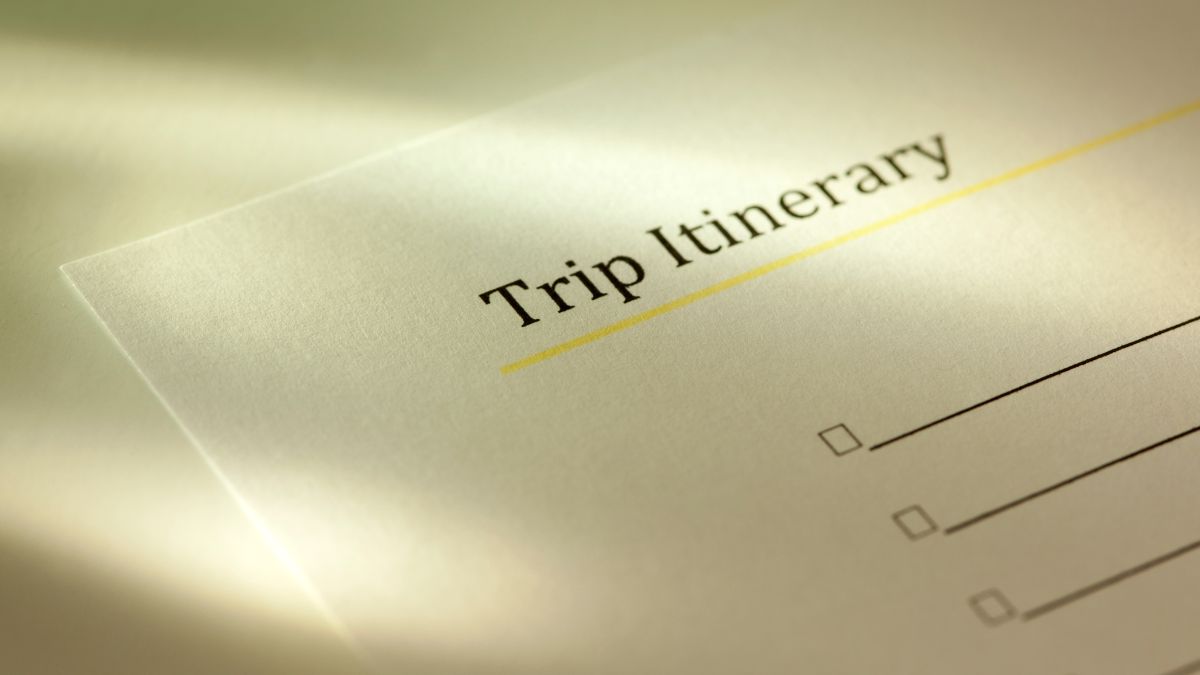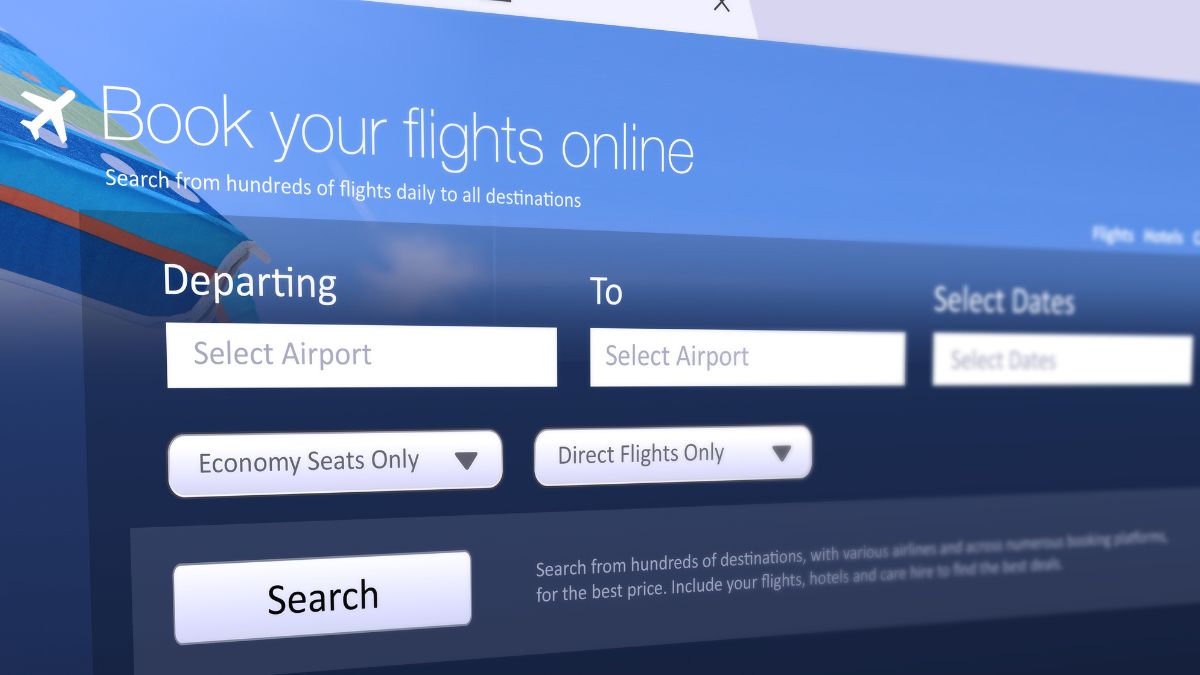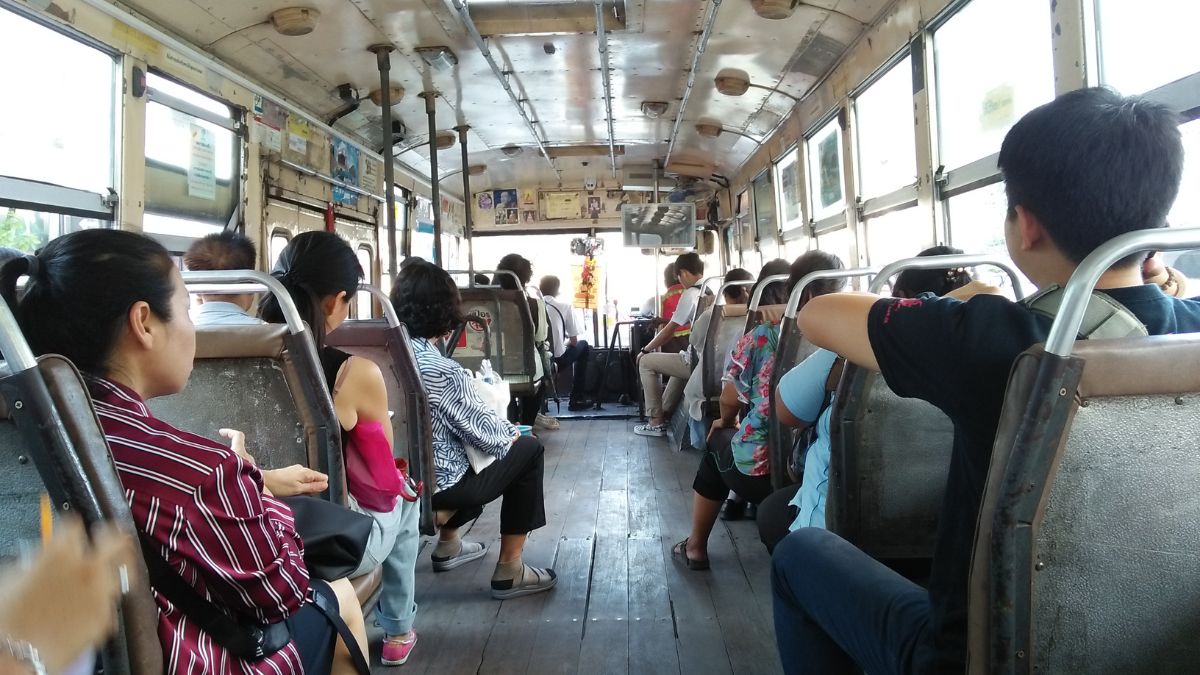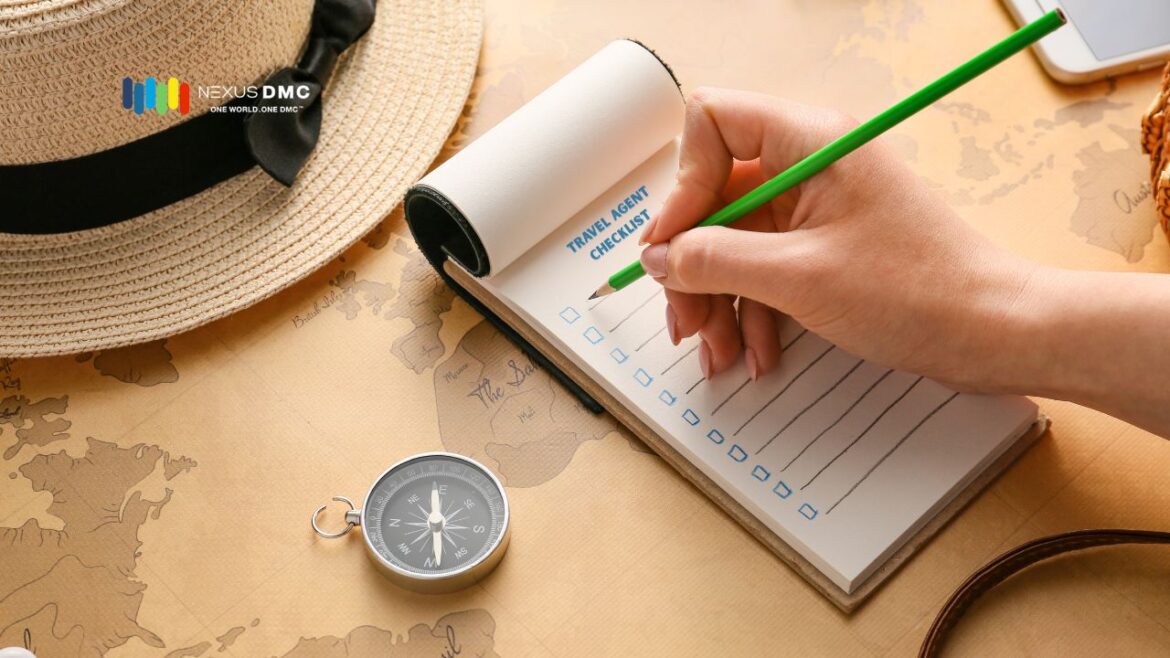Being a travel agent today is not just about booking flights and hotels. It’s about creating unforgettable experiences, ensuring compliance with local and international regulations, and providing constant support throughout a traveler’s journey. A well structured checklist ensures you never miss a detail whether you’re handling a solo trip, a family vacation, or a large corporate group.
This comprehensive Travel Agent Checklist has been curated to help stay efficient, provide excellent service, and deliver seamless travel bookings from start to finish.
Table of Contents
1. Initiate Client Communication

Clear and honest communication with your client is where every successful travel journey begins. This first step sets the tone for everything that follows. It’s your opportunity to understand their preferences, dreams, limitations, and expectations. By taking the time to ask thoughtful questions and listen closely, you lay the groundwork for a smooth planning process.
Clients often don’t know what details matter most, so your ability to guide them gently and gather the right information such as their travel goals, comfort levels, budget, and any special needs is essential. Effective communication from the start builds trust, prevents misunderstandings, and ensures a tailor-made travel experience your clients will appreciate.
Key Considerations:
- Purpose of Travel: Understand whether the client is traveling for business, leisure, adventure, or celebration.
- Preferred Travel Dates: Gather a range of dates and understand their flexibility.
- Group Details: Number of travelers, their age ranges, any special needs (elderly, children, etc.).
- Budget Discussion: Discuss an approximate budget that includes flights, accommodation, experiences, meals, and local transportation.
- Travel Style: Does the client prefer luxury, mid range, or backpacking style? Guided tours or independent exploration?
- Client Preferences: Note their preferred airline alliances, hotel chains, or room categories.
- Health Considerations: Identify any medical issues, dietary restrictions, or vaccination requirements.
Action Steps:
- Use a questionnaire or template to collect the above information.
- Store client preferences in a CRM or tracking sheet for future bookings.
- Offer destination suggestions based on preferences.
2. Research and Recommend Destinations

Selecting the right destination is a critical part of meeting your client’s expectations and ensuring they come back with happy memories.
Once you have a clear idea of why they are traveling whether it’s for relaxation, exploration, celebration, or business you can suggest destinations that align with their interests, weather preferences, travel season, and duration of stay.
Think beyond the usual hotspots; consider lesser known gems that match their travel vibe. For example, suggest a peaceful countryside retreat for those seeking relaxation or a bustling cultural hub for the more adventurous.
Also take into account their budget, visa requirements, and travel history to recommend places that feel exciting yet comfortable. Your expertise in suggesting just the right place can turn a simple trip into a transformative journey for your client.
Explanation of Factors to Research:
- Seasonal weather conditions and festivals: Understanding a destination’s climate helps clients pack appropriately and avoid disruptions. Festivals may enrich the experience or create crowd related challenges.
- Entry/exit requirements (visa, vaccinations, etc.): Every country has specific documentation and health requirements. Knowing this early prevents last minute surprises and denied entries.
- Currency exchange rates and cost of living: Clients need to know how far their money will go. Destinations with a favorable exchange rate may offer better value.
- Safety and political climate: Clients prioritize safety. Research crime rates, political stability, and travel advisories to guide them wisely.
- Language barriers: If English isn’t widely spoken, clients may need translation apps or guides. It also affects their level of independence in exploring.
- Recommended stay durations: Help clients make the most of their time by advising how many days are ideal to enjoy a place without feeling rushed.
Explanation of Suggestions and Presentation:
- Provide 2-3 destination options with pros and cons: Offer a short list so clients don’t feel overwhelmed. Share highlights, travel times, and any downsides to help them compare logically.
- Include sample itineraries and visuals for better understanding: Visuals, maps, and outlines of sample days help clients envision their trip clearly and confidently.
- Discuss accessibility from the client’s city of origin: Flight connections, duration, and visa formalities should be taken into account to recommend the most convenient options.
Create a Customized Travel Itinerary

Designing a travel itinerary is one of the most important responsibilities of a travel agent. A well crafted itinerary ensures your client has a smooth, enjoyable journey without feeling overwhelmed or lost. Here’s a step by step guide to help you create a travel plan that matches their expectations and adapts to changes when necessary:
Step 1: Confirm All Client Preferences
Review the notes from your initial discussions with the client. These should include the travel purpose, budget, group size, preferred destinations, and personal preferences. This will guide every element of the itinerary, from accommodation to activities.
Step 2: Plan Travel Logistics
Start by scheduling the major transportation details:
- Flights: Choose routes with minimal layovers and align with client preferences (departure times, airlines, class).
- Arrival and departure cities: Make sure there is time to transition smoothly without stress.
- Transfers: Include airport transfers, hotel pickups, or intercity trains and taxis.
Step 3: Book Accommodations
Select hotels or stays that suit the traveler’s style and needs:
- Proximity to attractions or event venues
- Required amenities (e.g., pool, kitchenette, accessibility features)
- Budget aligned options with flexible cancellation
- Special requests like early check in or late check out
Step 4: Map Out Daily Activities
Break down each travel day:
- Allocate time for sightseeing, shopping, or relaxation
- Schedule must visit attractions with estimated entry fees and opening hours
- Offer optional tours for flexibility
- Leave room for downtime to avoid fatigue
Step 5: Add Dining and Local Experience Suggestions
Recommend local restaurants, food tours, or regional dishes. You can categorize options by dietary needs, location, or client preferences.
Step 6: Insert Practical Information
Provide essential details like:
- Local emergency contacts
- Embassy or consulate info
- Health or safety guidelines
- Travel insurance policy details
Step 7: Finalize and Format the Itinerary
Design the itinerary in a clean, professional format:
- Use a PDF or mobile friendly version
- Include interactive elements like links to maps or bookings
- Add helpful tips or reminders for each day
By creating a personalized, well paced, and informative itinerary, you not only ensure client satisfaction but also position yourself as a trusted, knowledgeable travel expert.
4. Handle All Documentation and Formalities

Proper documentation is the backbone of international travel. Failure to secure necessary documents can result in denied boarding or entry.
Must Check Items:
- Passport Validity: Ensure passports are valid for at least six months beyond travel dates.
- Visa Requirements: Check and assist with visas, including e-visas and embassy appointments.
- Travel Insurance: Strongly recommend comprehensive coverage, especially for international trips.
- Vaccination Certificates: If required (e.g., yellow fever, COVID-19).
- International Driver’s License: For clients planning to self-drive.
- SIM Cards/eSIMs: Help clients stay connected affordably.
- Booking Confirmations: Hotels, tours, transfers, flights – ensure everything is printed and emailed.
5. Book Flights and Accommodations

One of the most vital responsibilities of a travel agent is booking the right flights and accommodations. This part of the process requires extreme accuracy, as even a small mistake can disrupt the entire trip. When done correctly, it ensures your client travels comfortably and stays at places that match their needs and expectations.
Step by Step Process:
Booking Flights:
- Verify Traveler Names: Ensure the names entered match the passport exactly. Even a single letter mismatch can cause issues at the airport.
- Choose Seat Class and Preferences: Ask if the client prefers Economy, Premium Economy, Business, or First Class. Note preferences like aisle or window seats.
- Add Meal Requests: Include special meal choices if needed (vegetarian, gluten free, halal, etc.).
- Plan Layovers Carefully: Avoid long or inconvenient layovers. If necessary, make sure there is enough time for immigration, especially for connecting flights.
Booking Accommodations:
- Location Matters: Choose hotels that are centrally located or close to key attractions to save time and cost on commuting.
- Match Amenities to Needs: Ask if clients require specific facilities like Wi Fi, kitchenettes, gym, pools, family rooms, or accessible rooms.
- Check Room Type and Size: Consider bed types, space for extra guests, and scenic views where available.
- Review Cancellation Policies: Ensure bookings allow for date changes or cancellations without large penalties.
- Early Check In or Late Check Out: If the flight schedule is tight, pre arrange flexible check in/out times.
Summary Table:
| Booking Area | Checklist Item | Purpose |
|---|---|---|
| Flights | Confirm exact name spelling | Prevent boarding issues |
| Flights | Choose seat type (aisle/window) & class | Client comfort |
| Flights | Add meal preferences | Cater to dietary needs |
| Flights | Plan layovers carefully | Ensure smooth transitions |
| Hotels | Select central location | Save travel time & money |
| Hotels | Match amenities to client needs | Enhance comfort and experience |
| Hotels | Review room size and view | Suit personal/family needs |
| Hotels | Confirm cancellation policy | Avoid financial loss |
| Hotels | Arrange check-in/out as needed | Align with flight timings |
6. Arrange Local Transportation and Transfers

Transportation within a destination plays a huge role in how smooth and enjoyable a trip feels. Even if you’ve planned the perfect itinerary, if your client struggles to get from one place to another, the experience can quickly become stressful.
Arranging local transportation and transfers in advance ensures that your client can move around with ease and confidence. It saves them from language barriers, high on the spot prices, and the anxiety of navigating unfamiliar systems.
Here’s a breakdown of how to handle this step effectively:
Step 1: Assess Transportation Needs
- Understand the type of traveler: Are they solo, a family, elderly, or a group?
- Determine mobility needs: Do they require accessible transport or child friendly options?
- Identify the destinations within the trip that need planned transfers (e.g., city to city, airport to hotel, hotel to venue).
Step 2: Choose the Right Transport Modes
Different destinations have different strengths when it comes to mobility. Choose transport that matches the place and the traveler:
Options with Pros and Cons:
- Airport Hotel Airport Transfers
- Pros: Reliable, pre arranged, less waiting time
- Cons: Might be pricier than taxis or rideshares
- Train Tickets or Regional Flights
- Pros: Time saving, scenic routes, efficient in many countries
- Cons: May require advanced booking, limited luggage options
- Car Rentals (With or Without Driver)
- Pros: Full flexibility, great for remote destinations
- Cons: Traffic issues, parking challenges, and licensing requirements
- Public Transport Passes
- Pros: Budget friendly, immersive local experience
- Cons: Can be confusing for tourists, less suitable for families or elderly travelers
- Private City Tours
- Pros: Personalized experience, guided information, skip the line access
- Cons: Generally more expensive
- Bike or Scooter Rentals
- Pros: Fun, great for short distances and eco friendly travel
- Cons: Not suitable in extreme weather or hilly terrain
Step 3: Provide Clear Instructions
- Include pick up locations, local contact numbers, and emergency protocols
- Provide maps, digital passes, or screenshots of booking vouchers
- Inform clients about local customs (e.g., tipping drivers, taxi apps to use)
Step 4: Create a Transport Schedule
- Outline the daily transport needs in the itinerary
- Avoid back to back bookings that leave no room for delays
- Include estimated travel times so clients are well prepared
Pre arranged transportation not only helps your clients travel comfortably but also shows your attention to detail and care for their safety and convenience. It’s one of those behind the scenes tasks that truly elevate the overall experience.
7. Offer Add On Experiences and Personalization

Personalizing a trip with unique, meaningful experiences can turn a standard holiday into a once in a lifetime memory. This step is not just a nice touch it’s an opportunity to showcase your value as a travel expert and differentiate your services from online booking platforms.
Why This Is Important:
Add ons enhance the overall travel experience and show the client that you’ve gone the extra mile to make their trip special.
Personal touches build emotional connections, which can lead to higher satisfaction, glowing reviews, and repeat bookings. These curated extras can also boost your revenue without much extra effort.
What to Consider:
Before suggesting add ons, understand your client’s interests, travel goals, and comfort levels. Some travelers might enjoy cultural immersion, while others may prefer relaxation or adventure.
Types of Add On Experiences (with Benefits):
- Cultural Activities (e.g., wine tastings, cooking classes, traditional shows)
- Pros: Deepens destination connection, great for storytelling later
- Ideal For: Foodies, culturally curious travelers
- Luxury Enhancements (e.g., private yacht rides, helicopter tours)
- Pros: Adds exclusivity and comfort
- Ideal For: Honeymooners, VIP clients
- Romantic Touches (e.g., sunset dinners, spa sessions)
- Pros: Adds emotional value and surprise
- Ideal For: Couples, anniversary trips
- Adventure Activities (e.g., diving, paragliding, hiking tours)
- Pros: Adrenaline boost, memorable moments
- Ideal For: Thrill seekers, active travelers
- Family Friendly Experiences (e.g., amusement parks, interactive museums)
- Pros: Keeps kids engaged, makes the trip smoother for parents
- Ideal For: Families with children
How to Implement:
- Discuss ideas during the itinerary planning stage
- Offer at least two personalized options per trip
- Present them as value added rather than upsells
- Include them in the itinerary with relevant details and images
Personalized travel experiences show your care, creativity, and expertise. They elevate your brand and leave a lasting impression long after your clients return home.
8. Pre-Travel Preparation and Checklist for Clients

This step is crucial in ensuring that clients feel prepared, confident, and stress free before departure. Pre-travel preparation goes beyond packing it ensures they have the tools, knowledge, and resources to navigate their destination easily and comfortably.
By providing a detailed checklist, you minimize the chances of confusion or last minute emergencies. It’s a small gesture that builds trust and showcases your professionalism.
Key Pre Travel Essentials to Guide Clients:
- Packing List Tailored to Destination and Season
- Recommend suitable clothing based on local climate and activities.
- Include essentials like medications, chargers, and travel sized toiletries.
- Currency Exchange Tips or Forex Card Options
- Advise on whether to carry local currency or a pre loaded forex card.
- Inform about ATM availability and best exchange rates.
- Health and Safety Advice
- Highlight required or recommended vaccinations.
- Share safety precautions, water/food hygiene, and sun protection tips.
- Power Socket Compatibility and Adapter Needs
- Inform them of plug types and voltage requirements for their destination.
- Recommend a universal adapter if needed.
- Useful Mobile Apps
- Suggest helpful apps like Google Maps, translation tools, local transport apps, and ride hailing services.
- Local Etiquette and Cultural Norms
- Educate about basic dos and don’ts, such as dress codes, tipping, or greeting customs.
- Encourage respectful behavior that enhances their cultural experience.
- Emergency Protocols
- Explain what to do if they lose their passport or face a health issue.
- Share emergency numbers, embassy contact details, and travel insurance policies.
Pre Travel Checklist Summary Table:
| Item | Purpose |
|---|---|
| Packing List | Ensure clients are well prepared for weather and activities |
| Currency Exchange / Forex | Help avoid poor rates or unavailability upon arrival |
| Health & Safety Advice | Ensure well being and prevent travel disruptions |
| Power Adapter Info | Prevent device issues in different voltage/socket regions |
| Mobile Apps | Make navigation and communication easier |
| Local Etiquette | Avoid cultural offenses and encourage respectful tourism |
| Emergency Protocols | Provide confidence and support in case of unforeseen issues |
9. Provide Ongoing Support During Travel

Travel doesn’t always go exactly as planned and that’s where the true value of a travel agent shines. Providing ongoing support while your clients are actually on their journey is one of the most essential (yet often overlooked) parts of delivering excellent service.
It ensures your clients feel cared for, reduces their stress levels, and reinforces your reliability and professionalism.
Why It’s So Important:
- Travel can be unpredictable: delayed flights, overbooked hotels, weather disruptions, or missed connections are real possibilities.
- Your clients may be in unfamiliar places where they don’t speak the language or understand local norms.
- Prompt, reassuring assistance helps turn a potential crisis into a minor hiccup.
How to Deliver Effective Support:
1. Proactive Arrival Check In
Send a friendly message once they land or check in to their accommodation. A simple “Hope you arrived safely, let me know if you need anything!” shows attentiveness.
2. Real Time Alerts and Monitoring
Keep an eye on their flights or weather changes. If there’s a delay, cancellation, or rerouting, notify them early and offer alternatives.
3. Direct Communication Channels
Set up a dedicated support thread on WhatsApp or Telegram. Clients prefer quick messages over emails when they’re on the move.
4. Last Minute Assistance
Offer concierge level help like booking a last minute dinner, changing hotel rooms, or recommending activities if a plan falls through.
5. Emotional and Reassuring Support
Sometimes travelers just need to feel like someone is on their side. Be available and empathetic, especially if they run into unexpected stress.
6. Mid Trip Feedback Check
Send a message mid journey asking if everything is going well. It gives you a chance to fix anything before it becomes a complaint.
Tools That Help:
- Use apps that let you track flights and weather conditions.
- Set calendar reminders to check in during key moments (arrival, mid trip, departure).
- Partner with concierge services or local guides for immediate ground level support.
Providing ongoing support sets great travel agents apart from average ones. It builds trust, creates positive word of mouth, and shows that you genuinely care about the traveler’s entire experience—not just the sale.
10. Handle Post Trip Engagement and Feedback

Your relationship with the client doesn’t end after the trip. Follow up is key to loyalty and referrals. This stage is where you transform a one time customer into a lifelong client. After the journey ends, reaching out to thank them and ask for feedback demonstrates that you genuinely care about their experience.
It also gives you valuable insights into what went well and what could be improved. Additionally, staying in touch through periodic travel deals, birthday wishes, or personalized recommendations helps keep your services fresh in their mind, increasing the chances of repeat bookings and referrals to friends or family.
Engagement Ideas:
- Thank you email with photo memory suggestions
- Request a short testimonial or review
- Offer a discount or incentive for the next trip
- Ask if they’d like to receive future travel deals
- Send birthday or anniversary travel recommendations
This not only ensures repeat business but also keeps your brand top of mind.
Powering Your Process with the NexusDMC Portal

NexusDMC is not just another travel service provider it’s your trusted back end powerhouse that simplifies and streamlines every aspect of your travel operations. As a travel agent, you already juggle countless details, from itinerary planning to on ground coordination. What if one platform could take the complexity out of your workflow and enhance your professional delivery?
This is where the NexusDMC Portal comes in. It offers a unified, all in one solution that connects you to hundreds of destinations across the globe with a single point of contact. Whether you’re booking a family holiday, a destination wedding, or a multi country group tour, Nexus ensures that everything from quotations and operations to payments and traveler support is handled seamlessly.
This saves time, reduces errors, and allows you to focus more on the creative and consultative aspects of your work helping your clients enjoy truly memorable travel experiences. It’s a reliable partner that empowers you to work smarter, grow your business, and deliver unmatched service with confidence.
Why NexusDMC is a Game Changer:
- One Point of Contact: Coordinate trips in multiple countries with a single account manager.
- Seamless Operations: From itinerary planning to real time travel support.
- Unified Payment System: Handle all payments under one roof, even for multi country travel.
- Expert Guidance: Destination specialists help you craft truly local experiences.
- Global Reach: Operate confidently in 100+ countries with reliable on ground support.
- Tailored Solutions: From FIT to MICE, NexusDMC delivers customized results every time.
By integrating the NexusDMC platform into your travel business, you eliminate complexity and focus more on client relationships.
Final Thoughts
A successful travel agent is not just a service provider but a trusted advisor, planner, and troubleshooter. By following this detailed checklist, you can deliver seamless travel experiences that keep clients coming back.
With strong communication, attention to detail, proactive planning, and the right partners, you’re not just booking travel you’re creating memories.
And with NexusDMC as your backend powerhouse, the sky is truly the limit.
Also Read: Thailand to Launch E-Visa for Indian Travelers in January 2025
Frequently Asked Questions
Why is the initial communication with the client so important?

The first interaction helps build trust and sets expectations. It allows you to understand the client’s travel preferences, budget, and needs, which leads to a more personalized and seamless travel experience.
What key information should I collect from a client at the start?

You should gather:
Purpose of travel (leisure, business, etc.)
Preferred travel dates and flexibility
Number of travelers and any special needs
Approximate budget
Travel style (luxury, mid-range, etc.)
Airline, hotel, or brand preferences
Health or dietary concerns
Why is having a travel agent checklist essential?

A checklist is your roadmap to delivering seamless travel services. It ensures every step from bookings and documentation to client communication and follow-ups is covered. It also helps you maintain consistency, accuracy, and a high standard of service for every client.
Does this checklist help improve travel services?

Absolutely! A well-structured checklist allows you to:
Prioritize key tasks
Meet all service parameters on time
Avoid common mistakes
Deliver a more professional, stress-free experience to clients
It’s like having a built-in quality control system for your travel business.
Can a professional travel agent follow a checklist?

Yes, and they should! Whether you’re new or a seasoned expert, a checklist helps:
Track and document every stage of the booking process
Maintain service standards
Ensure nothing slips through the cracks, even during busy seasons
It keeps things efficient, organized, and client-focused.

